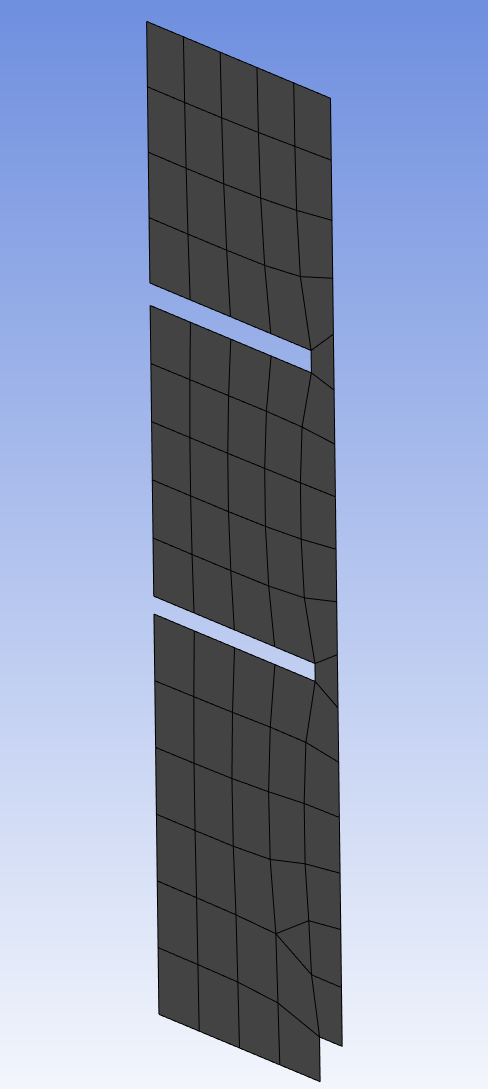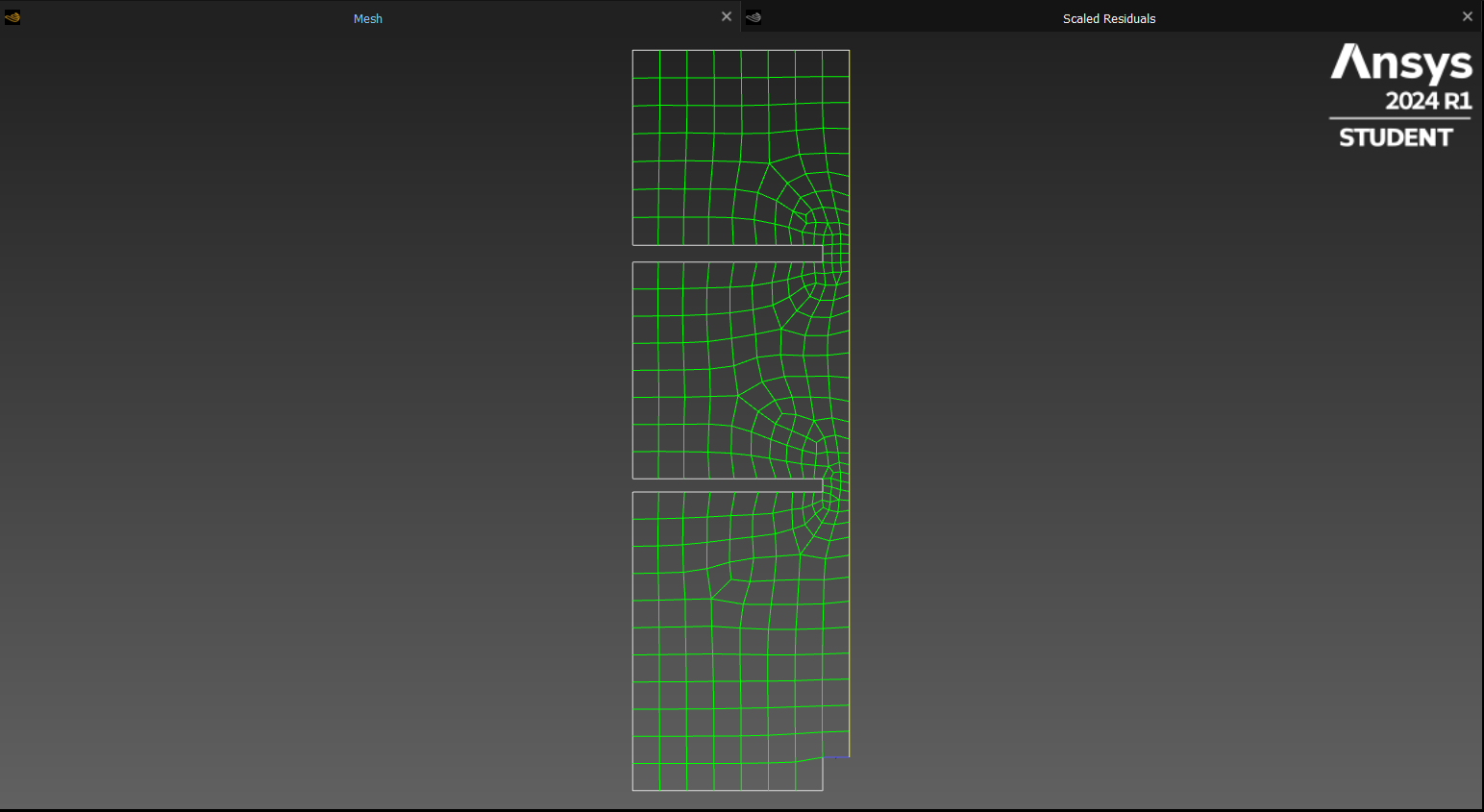-
-
March 1, 2024 at 4:14 am
Brennan Donovan
SubscriberHello,
I'm trying to run a 2D CFD simulation in Fluent. I have a model of the negative space here with a defined inlet. I have the simulation initialized as a "SIMPLE" transient model with what I believe are correct boundary conditions.
This is what the mesh looks like. After doing some online research it seems like the "floating point" error is usually derivative of a inconclusive value (diving by zero specifically). I'm not sure how to fix this error. I've changed the fineness of my mesh to .01 and .1, with both having similar problems. If anybody has an idea on where I'm going wrong I would love to have a direction to go in to finish this project.
-
March 1, 2024 at 9:58 am
Rob
Forum ModeratorYou're checking cell quality, and are showing that they're OK. However, you also need to resolve the flow, so your mesh isn't very good. In Meshing, look at the minimum cell size and proximity size functions: aim for 6-10 cells across the gaps and try running that.
-
March 1, 2024 at 4:32 pm
Brennan Donovan
SubscriberI reduced the cell size and reduced the min proximity. The cell size is .05 (from .07 initially) and the minimum proximity was reduced from .0005 to .0003. I'm unsure if this is fine enough but it does seem like the amount of cells across the gaps is greatly increased.
Unfortunately I got the floating point error immediately once again. I have updated pictures of what the console output is and what the mesh looks like after making these changes.
-
-
March 1, 2024 at 4:48 pm
Rob
Forum ModeratorYou may need more cells than that. However, I can see an inlet, but no outlet: what are you modelling?
-
March 1, 2024 at 4:52 pm
Brennan Donovan
SubscriberThis simulation is axisymmetric about the y-axis, which according to another thread could be the issue. It seems as though fluent can't do axissymmetric modeling around the y-axis. However, I'll be adding more cells as well per your suggestion.
I'm modeling a cross-section of an inflatable tower I am designing. This is meant to show a proof of concept regarding sectional inflation (the tight gaps are meant to constrict airflow to encourage the tower inflating from the bottom to the top as opposed to uniformly). Because it's essentially a balloon and the gas is meant to be confined to the inflatable, there's no defined outlet.
-
-
March 1, 2024 at 4:57 pm
Rob
Forum ModeratorIt can't, x-axis only. There's a rotate option in Fluent, Domain>Mesh>Translate/Rotate to fix that, y>=0 too!
If you're trying to fill a domain with no outlets you'll need ideal gas too otherwise you'll have more problems as the solver won't know where to put the gas volume.
-
March 1, 2024 at 6:39 pm
Brennan Donovan
SubscriberIt ran as soon as I changed the symmetrical axis. I really appreciate your help. I've been using air as my gas and didn't have any problems. Is that what you're referring to when you say I'll need ideal gas too?
-
-
March 4, 2024 at 9:13 am
Rob
Forum ModeratorIf you're adding fluid to a sealed domain you need to use a pressure function for density (ideal or real gas) or you'll not get a sensible result.
-
- The topic ‘“Floating point exception” error immediately as I run a 2D simulation’ is closed to new replies.



-
4663
-
1545
-
1386
-
1230
-
1021

© 2025 Copyright ANSYS, Inc. All rights reserved.










